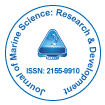Notre groupe organise plus de 3 000 séries de conférences Événements chaque année aux États-Unis, en Europe et en Europe. Asie avec le soutien de 1 000 autres Sociétés scientifiques et publie plus de 700 Open Access Revues qui contiennent plus de 50 000 personnalités éminentes, des scientifiques réputés en tant que membres du comité de rédaction.
Les revues en libre accès gagnent plus de lecteurs et de citations
700 revues et 15 000 000 de lecteurs Chaque revue attire plus de 25 000 lecteurs
Indexé dans
- Indice source CAS (CASSI)
- Index Copernic
- Google Scholar
- Sherpa Roméo
- Ouvrir la porte J
- JournalSeek de génamique
- Clés académiques
- RechercheBible
- Annuaire des périodiques d'Ulrich
- Bibliothèque de revues électroniques
- Recherche de référence
- Répertoire d’indexation des revues de recherche (DRJI)
- Université Hamdard
- EBSCO AZ
- OCLC-WorldCat
- Direction des chercheurs
- Catalogue en ligne SWB
- Bibliothèque virtuelle de biologie (vifabio)
- Publons
Liens utiles
Revues en libre accès
Partager cette page
Abstrait
Morphology, Distribution and Comparative Functional Morphology of Setae on the Carapace of the Florida Speck Claw Decorator Crab Microphrys bicornutus (Decapoda, Brachyura)
Monique A. Salazar and W. Randy Brooks
Some species of crab are known to “decorate” or attach various materials to their exoskeleton. Little is known about the functional morphology that facilitates such activities. In this study, ultrastructural morphology and distribution of setae on the exoskeleton of the Florida Speck Claw Decorator Crab Microphrys bicornutus were examined using scanning electron microscopy. Eleven morphologically complex structures were identified and mapped on the exoskeleton. Hooked setae were the primary structures used to attach algae to the crab’s body, as confirmed by ablation experiments in which successful decoration by the crab was practically nonexistent. Ten additional setal structures were present, including pappose, cuspidate, connate, plumose, plumodenticulate, two types of serrate, and simple setae. Within the set of these 10 additional setae, two novel types of setae were discovered and possible nomenclature suggested. On the basis of location and the high degree of morphological variation exhibited among these structures, a primary sensory function may be inferred with mechanical decoration playing a minimal role.
Revues par sujet
- Agriculture et Aquaculture
- Biochimie
- Chimie
- Food & Nutrition
- Génétique et biologie moléculaire
- Géologie et sciences de la Terre
- Immunologie et microbiologie
- Ingénierie
- La science des matériaux
- Le physique
- Science générale
- Sciences cliniques
- Sciences environnementales
- Sciences médicales
- Sciences pharmaceutiques
- Sciences sociales et politiques
- Sciences vétérinaires
- Soins infirmiers et soins de santé
Revues cliniques et médicales
- Allaitement
- Anesthésiologie
- Biologie moléculaire
- Cardiologie
- Chirurgie
- Dentisterie
- Dermatologie
- Diabète et endocrinologie
- Gastro-entérologie
- Immunologie
- La génétique
- Maladies infectieuses
- Médecine
- Microbiologie
- Neurologie
- Oncologie
- Ophtalmologie
- Pédiatrie
- Recherche clinique
- Soins de santé
- Toxicologie

 English
English  Spanish
Spanish  Chinese
Chinese  Russian
Russian  German
German  Japanese
Japanese  Portuguese
Portuguese  Hindi
Hindi